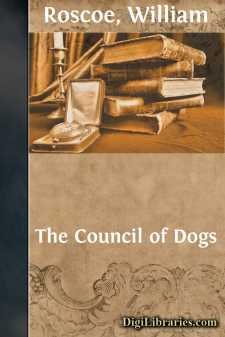Categories
- Antiques & Collectibles 13
- Architecture 36
- Art 48
- Bibles 22
- Biography & Autobiography 813
- Body, Mind & Spirit 142
- Business & Economics 28
- Children's Books 17
- Children's Fiction 14
- Computers 4
- Cooking 94
- Crafts & Hobbies 4
- Drama 346
- Education 46
- Family & Relationships 57
- Fiction 11829
- Games 19
- Gardening 17
- Health & Fitness 34
- History 1377
- House & Home 1
- Humor 147
- Juvenile Fiction 1873
- Juvenile Nonfiction 202
- Language Arts & Disciplines 88
- Law 16
- Literary Collections 686
- Literary Criticism 179
- Mathematics 13
- Medical 41
- Music 40
- Nature 179
- Non-Classifiable 1768
- Performing Arts 7
- Periodicals 1453
- Philosophy 64
- Photography 2
- Poetry 896
- Political Science 203
- Psychology 42
- Reference 154
- Religion 513
- Science 126
- Self-Help 84
- Social Science 81
- Sports & Recreation 34
- Study Aids 3
- Technology & Engineering 59
- Transportation 23
- Travel 463
- True Crime 29
The Butterfly's Ball and the Grasshopper's Feast
by: William Roscoe
Description:
Excerpt
INTRODUCTION.
Early in the present century John Harris—one of the successors to the business of "Honest John Newbery," now carried on by Messrs Griffith & Farran at the old corner of St. Paul's Churchyard—began the publication of a series of little books, which for many years were probably among the most famous of the productions of the House. Now, however, according to the fate which usually overtakes books for children, nearly all of them are forgotten or unknown.
The first book in this series which was known as Harris's Cabinet was "The Butterfly's Ball," and was published in January 1807. This was followed in the same year by "The Peacock at Home" (a sequel to "The Butterfly's Ball"), "The Elephant's Ball," and "The Lion's Masquerade;" and then (prompted no doubt by the success of these, for we learn on the publisher's authority that of the two first 40,000 copies were sold within twelve months) Mr Harris brought out a torrent of little books of a like kind, of which the titles were: "The Lioness's Ball," "The Lobster's Voyage to the Brazils," "The Cat's Concert," "The Fishes' Grand Gala," "Madame Grimalkin's Party," "The Jackdaw's Home," "The Lion's Parliament," "The Water King's Levée;" and in 1809, by which time, naturally enough, the idea seems to have become quite threshed out and exhausted, the last of the Series was published; this was entitled, "The Three Wishes, or Think before you Speak."
Of this long list of books a few of the titles are still familiar, and one of them, "The Butterfly's Ball," may certainly claim to have become a Nursery Classic. It is still in regular demand; the edition now in sale being illustrated by Harrison Weir; it has been published in various forms, and has figured in most of the collections of prose and verse for the young that have been issued during this century. Probably to the minds of hundreds of people past middle age few lines are more familiar than the opening couplet—
"Come take up your hats, and away let us haste
To the Butterfly's Ball and Grasshopper's Feast"—
and many no doubt by a little effort of memory could repeat the whole poem.
Hardly less famous were the three books which next followed in order of issue—"The Peacock at Home," "The Elephant's Ball," and "The Lion's Masquerade." Their original size was 5 by 4 inches, and they were issued in a simple printed paper wrapper. It is of these first four books that the reprint is here given, and in order to present both pictures and text with greater effect this reprint has been made upon considerably larger paper; the text and illustrations are fac-simile reproductions of originals from the celebrated Flaxman collection recently dispersed at a sale by Messrs Christie, Manson, & Woods, when Mr Tuer, to whom I am indebted for their loan, became their fortunate possessor. "The Butterfly's Ball" is not a reproduction of the first edition, which, as will be shown later on, would be considered by those who are familiar with the poem as incomplete. Moreover, the illustrations in the edition here presented are obviously by the same hand as that which embellished the other three books, and it was felt that for these reasons it would possess a greater interest....



